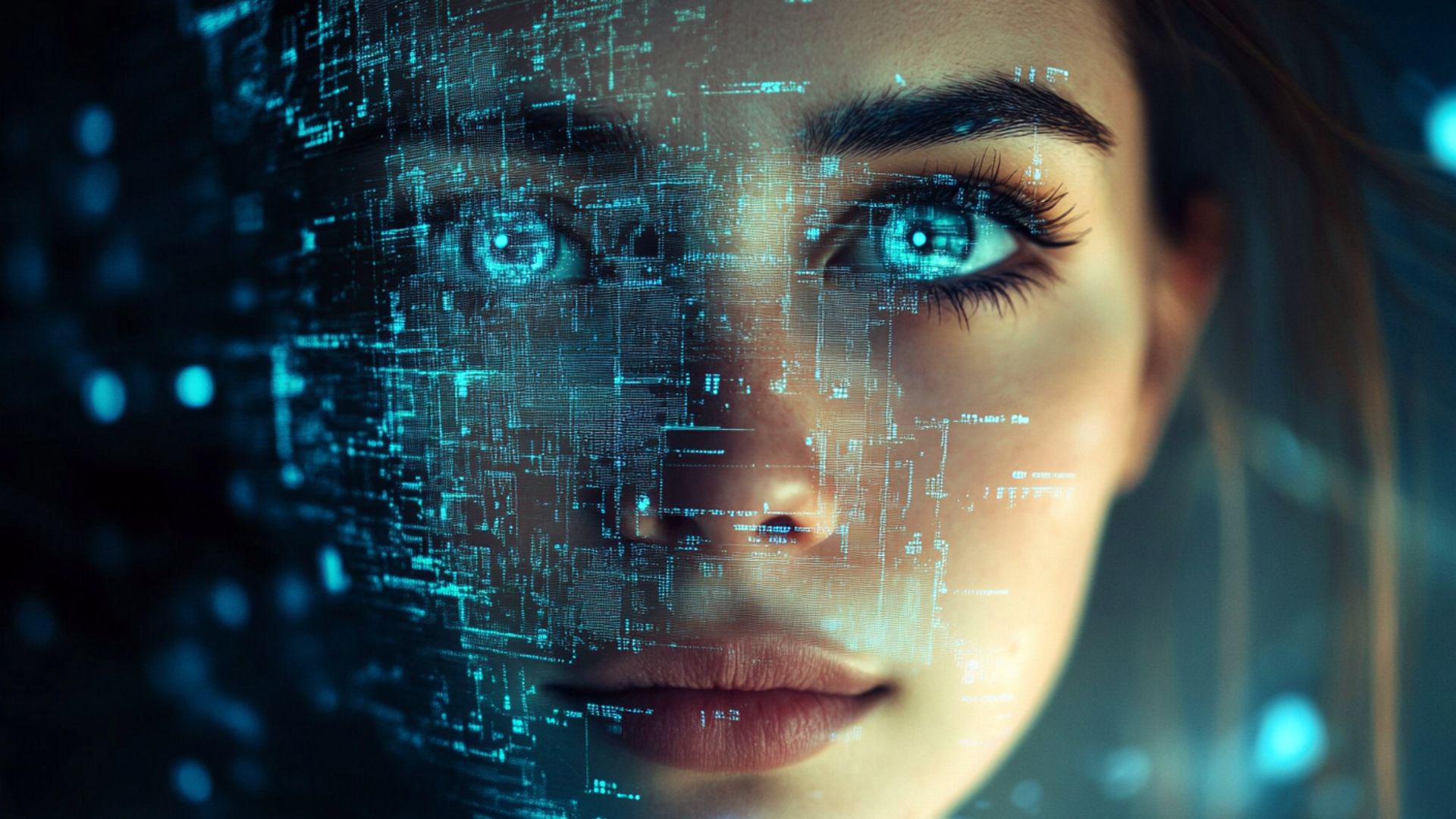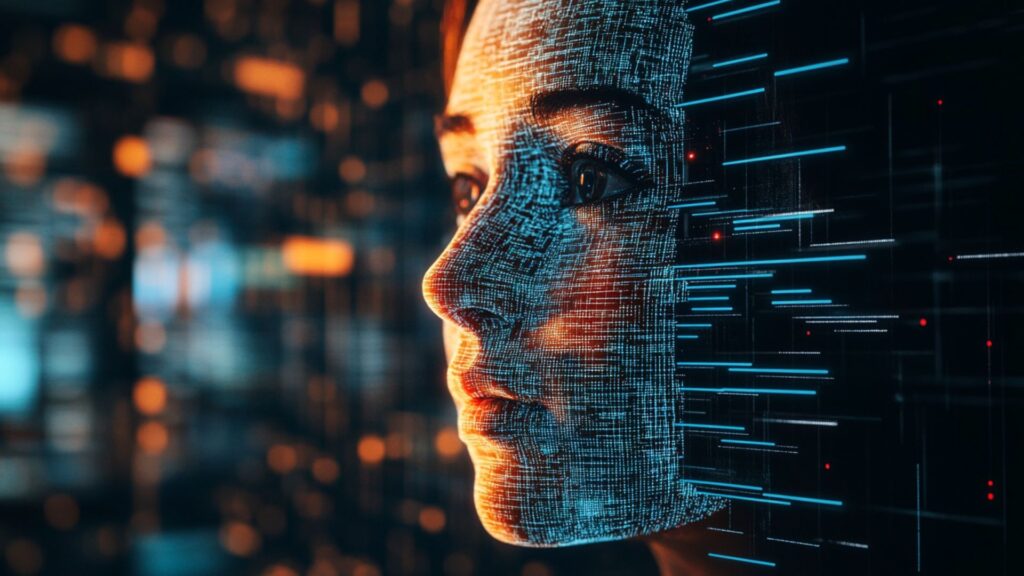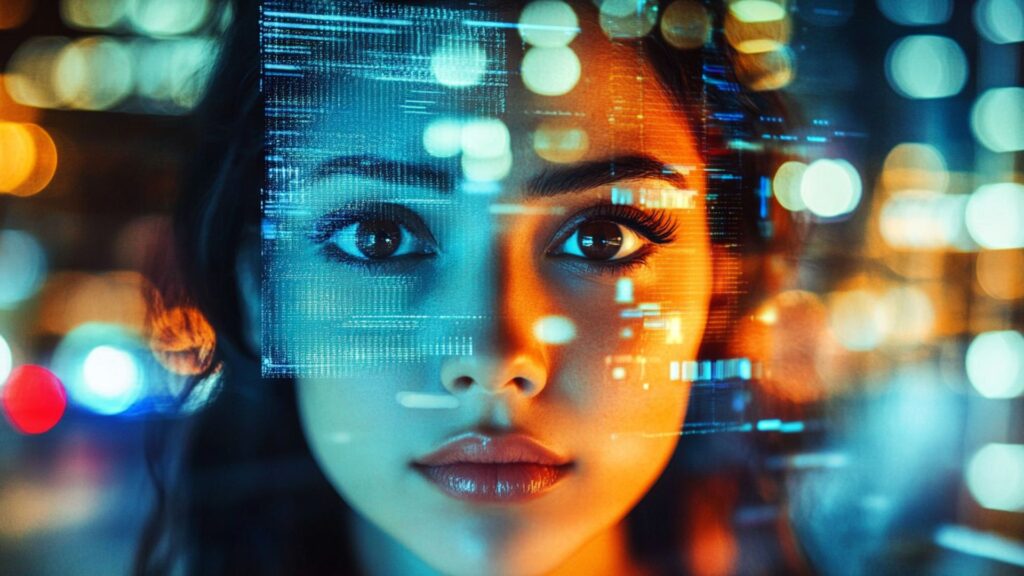Deepfakes and AI Media: How to Distinguish Reality from Fakery?

Deepfakes and artificial intelligence (AI) media detection are critical challenges in today's digital landscape. Deepfakes are hyper-realistic videos created using AI tools that allow face-swapping or audio manipulation. Synthetic media encompasses images, voices, and videos entirely generated by AI algorithms. These innovations have surged significantly due to rapid technological advancement and increasing accessibility of AI tools. Once limited to technical experts, anyone can now produce convincing fakes using free mobile applications.
This rise of AI deepfakes threatens to erode trust in news media and fuel misinformation across social platforms. It creates fraud risks in professional environments and personal interactions. Distinguishing reality from fakery is essential to protect democratic processes, personal reputations, and business integrity. Societal implications include eroded public discourse and increased vulnerability to sophisticated scams. Mastering AI media detection and learning to spot fake videos is no longer optional — it's a vital skill for everyone navigating the digital world.
Understanding Deepfakes: Technology and Creation
Deepfakes rely on AI-generated content created through sophisticated neural networks. Creators use GANs (Generative Adversarial Networks), where two neural networks compete: one generates fake images while the other detects flaws. This adversarial process continuously sharpens realism and quality. AI algorithms train on massive datasets of faces, voices, and scenes to learn patterns. Autoencoders swap facial features between subjects, while diffusion models refine individual pixels.
Deepfake videos started crudely in 2017 with stiff-looking face swaps. Tools like DeepFaceLab required significant technical expertise to operate. By 2020, mobile apps had significantly simplified the creation process. Now, AI media tools can produce convincing deepfakes in just minutes. Voice cloning uses systems like Tacotron or VALL-E to replicate speech patterns. Image synthesis utilizes models like Stable Diffusion to achieve photorealistic results.
Examples demonstrating deepfake technology:
- Video manipulation: Swapping celebrity faces in movie scenes or creating political figures in fabricated scenarios.
- Voice cloning: Generating fake speeches from text input that sound identical to real voices.
- Live deepfakes: Real-time face filters that work on video conferencing platforms like Zoom.
- Audio fakes: Scam phone calls that mimic family members' voices with alarming accuracy.
The technical sophistication of AI media is advancing at an unprecedented pace. Initially, creating fake AI videos required high-performance GPUs and deep technical knowledge. Today, cloud-based services allow anyone to generate realistic media with just a few clicks. As a result, detection methods struggle to keep pace, often lagging behind creation techniques. AI-generated media has shifted from niche applications to mainstream use in entertainment, marketing, and social media.
Why AI Media Challenges Trust and Authenticity
AI-generated deepfake content severely erodes digital authenticity and public trust. People now question every image and video they encounter online. Trust vanishes when viewers can no longer distinguish real from fake. Psychologically, this constant deception creates widespread doubt where reality seems negotiable and society fractures along lines of belief. Some people embrace manipulated content while others reject all media entirely as potentially false.
Fake videos are disrupting political processes worldwide as candidates face AI-generated deepfake attacks. Authentic clips get dismissed as fabricated, while fake content spreads as truth. Voters remain confused about what's real, and social media platforms amplify this chaos. A single viral clip can ignite mob reactions before verification occurs. Journalism struggles to fight back as reporters desperately need reliable deepfake detection tools. Time pressures mount, trusted sources become scarce, and public faith in media crashes.
Scams exploiting deepfakes are exploding in frequency and sophistication. Blackmail cases rise as criminals create compromising fake videos of victims. The "liar's dividend" phenomenon allows guilty parties to claim innocence by dismissing authentic evidence as deepfakes. Meanwhile, deepfake detection technology lags behind creation capabilities. Digital watermarks can be removed or spoofed, and new deceptive techniques emerge daily.
Real-world examples showing the harm:
- 2018 Gabon: AI-generated deepfake video of an ailing president sparked an attempted coup.
- 2019 Pelosi: Deliberately slowed video made the Speaker appear to slur words and went viral on Facebook.
- 2020 Myanmar: Fake atrocity videos fueled ethnic violence and riots.
- 2022 Ukraine: AI-generated deepfake of President Zelenskyy urged surrender and was aired on hacked television.
- 2023 U.S.: Voice clones impersonating President Biden solicited fraudulent campaign donations.
- 2024 Hong Kong: Fake CEO video in a conference call enabled thieves to steal $25 million.
Deepfake detection tools are constantly evolving and becoming more sophisticated. They analyze pixel patterns, audio inconsistencies, and facial micro-expressions to expose manipulated content. Blockchain technology offers a promising layer of protection by providing immutable records of authentic media. However, as fabrication methods advance, the challenge of maintaining digital truth intensifies. Defending accuracy requires constant vigilance, widespread adoption of detection tools, and increased public awareness.
Identifying Common Signs of Deepfakes
AI-generated deepfake videos fool millions of viewers daily. You can spot them quickly with simple observation techniques. While AI video detector apps are helpful, recognizing human-detectable clues remains most effective for immediate identification.
Visual cues often reveal fakes if you know what to look for. Watch for abnormal blinking patterns — real eyes blink every 2 to 10 seconds naturally. AI-generated deepfake faces often skip blinks entirely or over-blink unnaturally. Inspect skin texture carefully, as synthetic faces usually exhibit blurry edges or an unnaturally waxy appearance. Lighting mismatches frequently appear when one side of the face is illuminated incorrectly. Watch for lips lagging slightly behind speech, indicating failed audio-video synchronization.
Quick methods anyone can use:
| Method | How to Check | Red Flags |
| Zoom In | Enlarge face/neck area | Pixel blur, jagged edges, color banding |
| Reverse Search | Screenshot + Google/TinEye | No original source, sudden appearance |
| Play Slow | 0.25x playback speed | Unnatural mouth shapes, frame glitches |
| Check Audio | Mute video, listen separately | Robotic tone, missing breath sounds |
| Use AI Detector | Upload to Hive, InVID, Deepware | High fake probability score (>70%) |
| Source Trace | Who posted? When? Where? | New account, no history, suspicious timing |
Pause suspicious clips and take time to scrutinize even the smallest details. Facial expressions, reflections in eyes, and lip movements can reveal digital manipulation. Cross-check the same video across multiple platforms to verify its authenticity. Genuine media typically includes traceable metadata such as timestamps, file origins, or geolocation data. AI-generated deepfakes often lack this verifiable information, making them easier to expose once you know what to look for. Train your observation skills daily by comparing verified authentic videos with known fakes. Share detection tips within your network and strengthen collective AI video detector habits. Recognizing deception always begins with informed, healthy skepticism.
Tools and Techniques for Verification
In the digital era, misinformation spreads rapidly through manipulated media, making deepfake detection crucial for protecting truth and trust. AI-driven verification methods now help distinguish authentic content from fabricated material. Advanced algorithms assess subtle inconsistencies in lighting, shadows, and facial movements that the human eye often misses.
Verification techniques:
- AI video detector: Identifies pixel-level manipulation and frame-by-frame inconsistencies in videos.
- Reverse image/video search: Traces original sources to reveal tampering, reuse, or context manipulation.
- Metadata analysis: Examines timestamps, geolocation data, and camera information embedded in files.
- Blockchain verification: Confirms media authenticity through immutable digital records and timestamps.
- Audio forensics: Detects mismatched voice tones, unnatural compression artifacts, or cloned speech patterns.
Together, these tools empower both journalists and everyday users to critically evaluate online content. AI-based systems analyze file origins and detect motion irregularities to identify potential deepfakes. This improves both detection accuracy and response speed significantly. Integrating deepfake detection technology into social media and news platforms is crucial for automatically flagging suspicious uploads before they spread widely.
Metadata inspection further strengthens deepfake detection efforts, as even minor discrepancies in time stamps or location data can expose forgery attempts. Reverse searches help confirm whether visuals have been manipulated or taken out of their original context. These technological safeguards enable society to distinguish between digital fiction and verifiable fact. Through continuous innovation in AI-powered verification systems, the fight against misinformation becomes more effective, preserving public trust and promoting responsible media consumption.
Ethical Considerations and Legal Implications

AI ethics demand careful scrutiny of deepfake technology as laws struggle to keep pace. Synthetic media regulations increasingly target harmful applications, yet digital authenticity fades without robust enforcement. AI media ethics emphasize the critical importance of obtaining consent and maintaining truthfulness.
Deep fake videos regulations have surged dramatically in 2025. The U.S. Take It Down Act, signed May 19, criminalizes non-consensual intimate synthetic media nationwide. Platforms must remove reported content within 48 hours or face penalties. Violators face substantial fines and up to two years in prison. All 50 states now ban non-consensual sexual deepfake videos with varying penalties.
California mandates clear disclaimers on political advertisements using AI manipulation. Pennsylvania's Act 35 penalizes fraudulent deepfake creation with criminal charges. The EU AI Act classifies high-risk deepfakes as prohibited when deemed harmful to individuals or society. The UK's Online Safety Act specifically covers sharing intimate fakes without consent. China requires explicit consent for deepfake creation under PIPL regulations. Denmark bans non-satirical political deepfakes during election periods.
Key ethical concerns:
- Consent: Non-consensual pornographic deepfakes cause severe harm to victims. Explicit permission is required for any use of someone's likeness.
- Defamation: Fake AI videos damage personal and professional reputations, though proving intent remains challenging.
- Misinformation: Political deepfakes can sway elections and erode trust in legitimate media sources.
- Privacy: Unauthorized use of personal data for AI training violates privacy protections and exposes sensitive information.
AI ethics call for a careful balance between innovation and protection. With proper guidelines in place, innovation can thrive alongside necessary safeguards. Protecting truth demands immediate and sustained action.
Responsibilities of Content Creators and Platforms
As deepfake technology becomes increasingly sophisticated, responsibility for maintaining information integrity lies with content creators, social media platforms, and AI developers. These groups must work collaboratively to prevent misuse and ensure audiences receive accurate information.
Key responsibilities:
- Transparency: Creators should clearly disclose when digital alterations or AI tools are used in the production of their content.
- Verification systems: Platforms must employ both automated detection tools and trained human moderators to identify deepfakes.
- Ethical design: AI developers should build systems with built-in safeguards to prevent malicious manipulation and exploitation.
- Public education: Users must be informed about recognizing suspicious or misleading media through accessible resources.
- Accountability policies: Platforms should enforce strict penalties against those spreading fabricated content.
Social media networks are investing heavily in advanced deepfake detection software that scans uploads for anomalies. News organizations are establishing fact-checking partnerships to verify digital sources before publication. Ethical collaboration among creators, platforms, and AI engineers is essential to ensure that innovation remains aligned with truth and public trust.
Educating the Public on AI Media Literacy
Promoting AI media literacy is crucial for building an informed society. Understanding how to detect deepfakes empowers individuals to question what they see, verify information sources, and resist the spread of misinformation.
Strategies to enhance media literacy:
- Critical thinking training: Teach people to analyze visual and verbal cues that indicate manipulation.
- Workshops and webinars: Offer educational sessions on identifying and using deepfake detection tools.
- Fact-checking initiatives: Encourage users to verify sources of digital content before sharing.
- School collaborations: Integrate AI Awareness and Media Literacy into Educational Curricula.
- Interactive learning: Use games, simulations, and quizzes to practice identifying fake news.
Educational projects like "Reality Defender" and "MediaWise" offer free online tutorials explaining how to spot deepfakes. Universities and community centers host digital literacy programs teaching verification tools. Continuous education ensures that every user can become a capable digital citizen, able to recognize false narratives and defend truth.
Future of Deepfakes and AI Media

AI-generated content is expected to reach photorealistic perfection by 2027, making detection increasingly difficult. Real-time video deepfakes will run undetected on mobile phones. Voice cloning will require only 3 seconds of audio. Learning how to spot deepfakes will become an essential skill in daily life.
Detection technology races to keep pace, with modern tools achieving near 99% accuracy rates. Advanced systems can detect deepfakes by analyzing subtle heartbeat patterns through changes in skin color. Blockchain technology can timestamp every frame for verification.
Future trends:
- Hyper-realistic avatars: AI-generated hosts replace human news anchors.
- Live manipulation: Video calls enable identity swapping mid-conversation in real-time.
- Universal watermarks: Cameras will embed cryptographic proofs at the time of capture.
- Educational mandates: Schools will teach students how to spot synthetic media starting in elementary grades.
Media outlets will require verified seals from deepfake detectors before publication. Social platforms will automatically flag suspicious content. Learning how to spot synthetic media will join reading and mathematics as core literacy skills. The future requires striking a balance between innovation and safety. Mastering how to spot synthetic media becomes non-negotiable for maintaining our grasp on reality.
Best Practices to Stay Safe in the Age of AI Media
Knowing how to detect deepfakes is essential for maintaining truth and credibility online. Both individuals and organizations must develop strong verification habits before believing or sharing information from the media.
Best practices:
- Verify before sharing: Confirm videos or images through credible fact-checking sources.
- Utilize deepfake detectors: Utilize AI tools to quickly identify pixel inconsistencies or audio manipulation.
- Check metadata: Authentic content typically carries timestamps, device information, and location data.
- Stay alert to emotional manipulation: Fake video AI often uses shock or outrage to spread rapidly.
- Educate yourself continuously: Learn to recognize visual cues and common verification techniques.
Organizations should establish internal verification policies that require the assessment of all digital assets before public release. For individuals, maintaining a skeptical mindset is equally critical. Always pause and scrutinize suspicious clips, comparing them against verified sources. Combining technological tools with mindful consumption habits helps preserve digital integrity. Awareness, ongoing education, and responsible sharing practices remain the most effective defenses against misinformation in the age of AI-driven deception.


